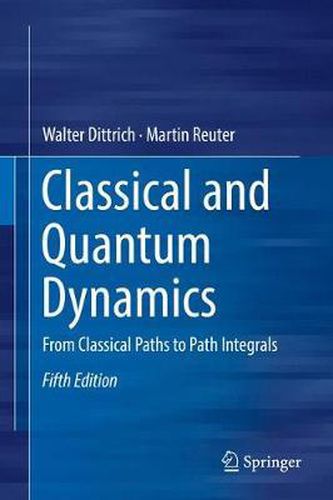Readings Newsletter
Become a Readings Member to make your shopping experience even easier.
Sign in or sign up for free!
You’re not far away from qualifying for FREE standard shipping within Australia
You’ve qualified for FREE standard shipping within Australia
The cart is loading…






Graduate students who wish to become familiar with advanced computational strategies in classical and quantum dynamics will find in this book both the fundamentals of a standard course and a detailed treatment of the time-dependent oscillator, Chern-Simons mechanics, the Maslov anomaly and the Berry phase, to name just a few topics. Well-chosen and detailed examples illustrate perturbation theory, canonical transformations and the action principle, and demonstrate the usage of path integrals. The fifth edition has been revised and enlarged to include chapters on quantum electrodynamics, in particular, Schwinger’s proper time method and the treatment of classical and quantum mechanics with Lie brackets and pseudocanonical transformations. It is shown that operator quantum electrodynamics can be equivalently described with c-numbers, as demonstrated by calculating the propagation function for an electron in a prescribed classical electromagnetic field.
$9.00 standard shipping within Australia
FREE standard shipping within Australia for orders over $100.00
Express & International shipping calculated at checkout
Graduate students who wish to become familiar with advanced computational strategies in classical and quantum dynamics will find in this book both the fundamentals of a standard course and a detailed treatment of the time-dependent oscillator, Chern-Simons mechanics, the Maslov anomaly and the Berry phase, to name just a few topics. Well-chosen and detailed examples illustrate perturbation theory, canonical transformations and the action principle, and demonstrate the usage of path integrals. The fifth edition has been revised and enlarged to include chapters on quantum electrodynamics, in particular, Schwinger’s proper time method and the treatment of classical and quantum mechanics with Lie brackets and pseudocanonical transformations. It is shown that operator quantum electrodynamics can be equivalently described with c-numbers, as demonstrated by calculating the propagation function for an electron in a prescribed classical electromagnetic field.